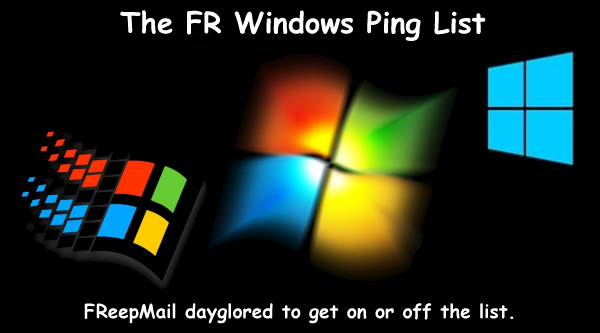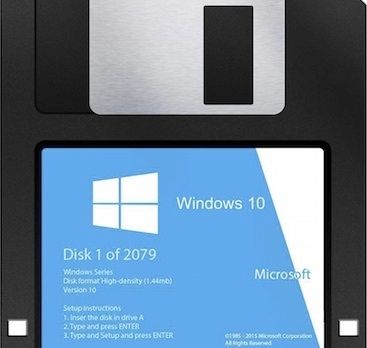
Bkmk waiting for good answers...
Can’t help you, but I’m interested to learn if you get this to work. I was thinking of doing this, but just never got around to it.
I downloaded an evaluation, non licensed copy of 10 that I run in “Virtualbox” on my Mac. Works great. Before that I used to run Win2K in a Virtualbox SuSE Linux on my ThinkPad. It worked great too, except for some USB issues with my then new iPhone 3GS. I ran iTunes in the virtual Windows for sync purposes.
Virtualbox started out as shareware, and got scarfed up by Oracle. Free download
it sounds doable (i’ve had ver of linux and windows booting on the same machine with vm’s), but i wouldn’t let w10 get a crack at the real machine.
Have you considered the following possible alternative:
Host os Linux 64 bit Mint
Guest VM 1 - Windows 10 for games and daily use
Guest VM 2 - Windows 10 for work / photo shop.
This way your base system can stay on and connected to the Internet without reporting any information to Microsoft.
In this configuration, I would recommend that you determine the most demanding Windows 10 memory requirement, add 2 Gig of memory and then double that amount to ensure that you have enough memory to run both instances and Mint at the same time.
There are some other optimization you should consider: Raid 0 for your primary drive - Recommend two IDENTICAL SATA drives
Hard wire your PC to your home router
Consider a high end graphics card that works well with Linux http://www.phoronix.com/scan.php?page=category&item=Graphics+Cards
Installing Ubuntu/Linux Mint on UEFI System with Windows 8/8.1/10
http://forums.mydigitallife.info/threads/62886-Installing-Ubuntu-Linux-Mint-on-UEFI-System-with-Windows-8-8-1-10
I have been wondering about a similar laptop setup — Win10 and Linux/Mint/Cinnamon but with Win7 in the virtual window.
I have several software programs that will not run under Win10 and do not have upgrades. They are mostly utility programs, but there are no ‘modern’ equivalents. I had to finagle to get them to even run under Win7.
Install this.
Open this with what you just installed ^
http://download.virtualbox.org/virtualbox/5.0.14/Oracle_VM_VirtualBox_Extension_Pack-5.0.14-105127.vbox-extpack
Set up your repository for upgrades later. Add this to your software sources.
deb http://download.virtualbox.org/virtualbox/debian trusty contrib
Run this at command prompt.
wget -q https://www.virtualbox.org/download/oracle_vbox.asc -O- | sudo apt-key add -
apt-get update
And yes, you can run windows while you have a windows partition, but I promise you that you won’t want to. Dual booting is going to get real old when you realize how fast the virtualized OS is. It’s 2d/3d native enabled, and can optimize for SSD access/speeds.
In any case, that’s how you do it. Good luck.
Unfortunately, slave drives are racist...
Why not just run it as a virtual machine?
I would break free from Windows if you can. A nice version of Linux is
Knoppix. It is packed with everything you need and more.
I put Windows 10 on a laptop (primary pc is a desktop).
I found out my CorelDraw X3 which came out in 2006 will not install so I installed my Windows 7 that had been on the laptop in Oracle VirtualBox (free) and then installed CorelDraw X3 in there : )
CorelDraw X8 may be coming out this March when I tried X7 I noticed not much has changed. X7 was $500 if I bought it which I won’t as X3 is really all I need.
Just because the host hardware is 64-bit does not mean you can run a virtual 64-bit guest OS. You also have to have a 64-bit CPU that supports virtualization, which not all do. In the case of Intel it’s called VT-x and AMD calls it AMD-v, so check your slug’s specs. You still can do a 32-bit install without a virtualization-enabled CPU, but not 64-bit.
Also, I will never again dual-boot from a single hard drive on a PC I expect high availability from (never on my “daily driver”). Windoze and Linux just don’t get along, and locking the both of them in (essentially) the same room pretty much guarantees that, sooner or later, a turf war will erupt. The result of which, if you’re lucky, will be that only one of the OS’s boot records will get hammered, which can be fixed by booting off of a repair disk (or thumb drive w/same) to repair the damage.
I only ever dual boot on multiple HDDs any more, and do not rely on anybody’s boot manager but select the proper HDD at boot-up through Bios Boot Select. That minimizes the contact between the two OSes, and with it the possibility for domestic violence.
Creating a Win10 virtual disk on the original hardware should look the same to M$ as just another a re-install, so that shouldn’t be a problem.

This allows you to use your existing Windows partition as a VM disk without having to re-install/take up tons of disk space.
 |
 |
|---|
By way of ShadowAce's Tech Ping!!
I’ve got a couple of dual-booted Win7 + Ubuntu machines, working fine — the Ubuntu boot manager (basically GRUB) does a fine if somewhat overly-complicated job. I’ll end up trying to do that with Win10 + Ubuntu at some point, but haven’t yet.
Dual booting is very easy. You need a separate drive/partition for each OS. Hard drives are cheap enough so I’d just get another one. You can also boot Linux off a USB stick.
I wouldn’t use Photoshop in a VM unless you have a huge pile of memory to allocate to it.
All of my machines dual boot Linux and Windows. There is a nice thing about two drives. You can use one to rescue/backup the other.
I also use an external to backup everything.